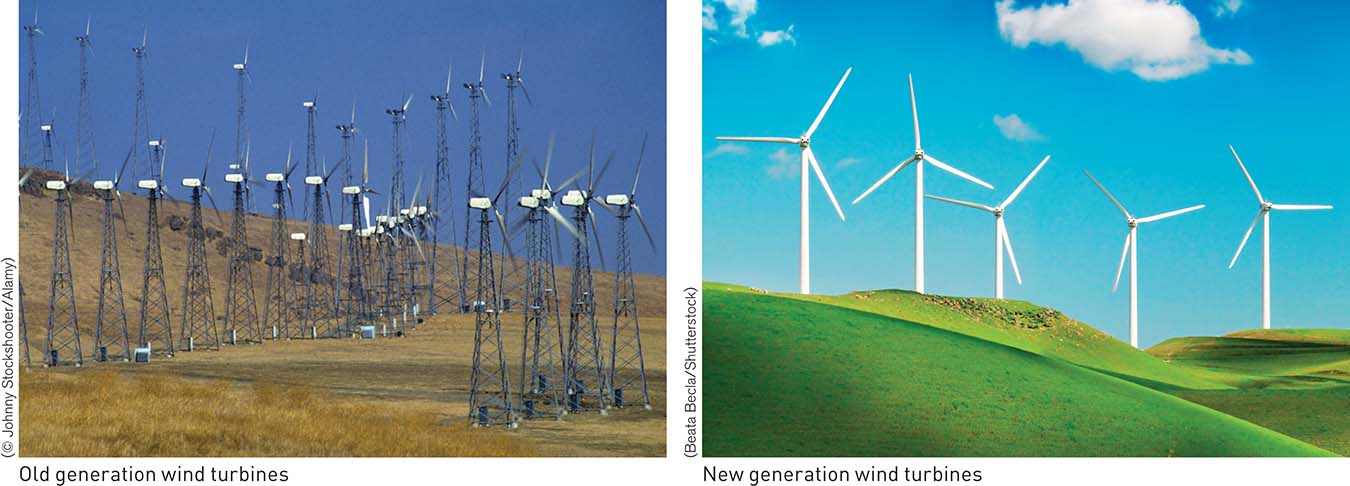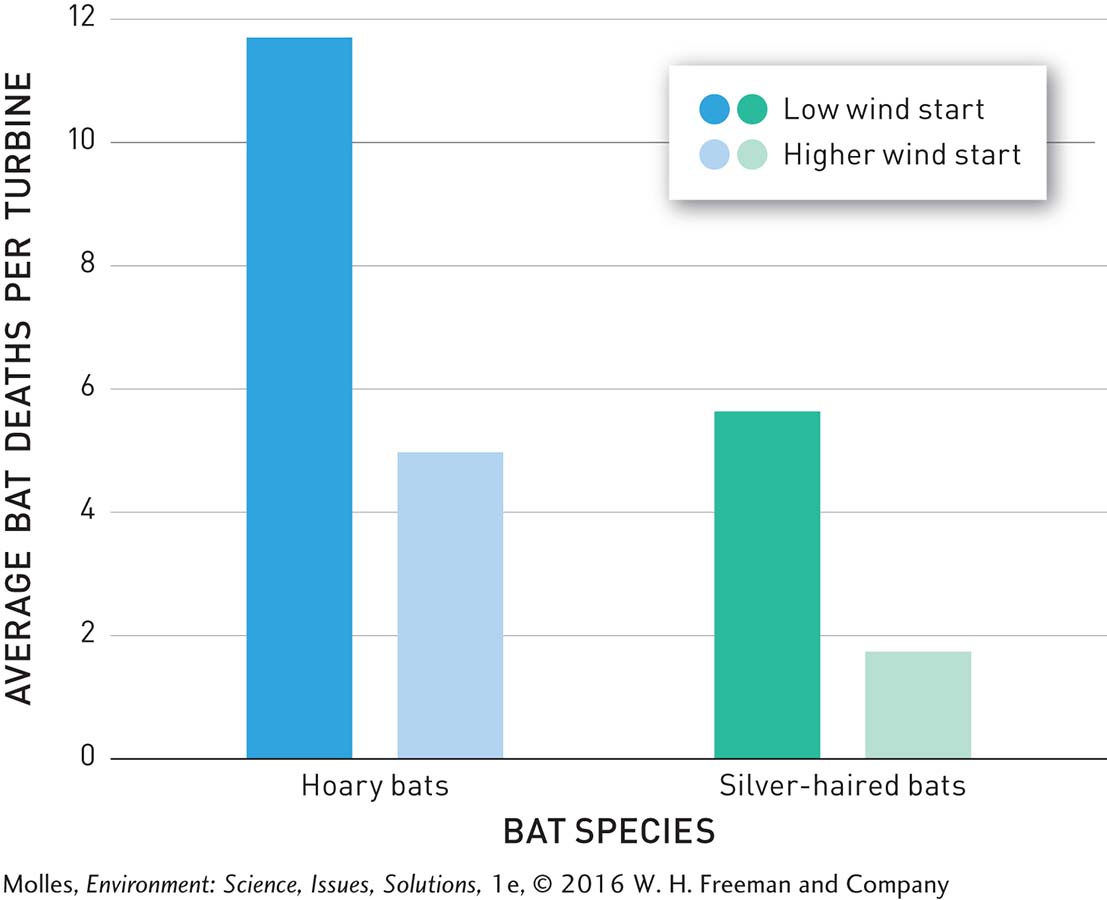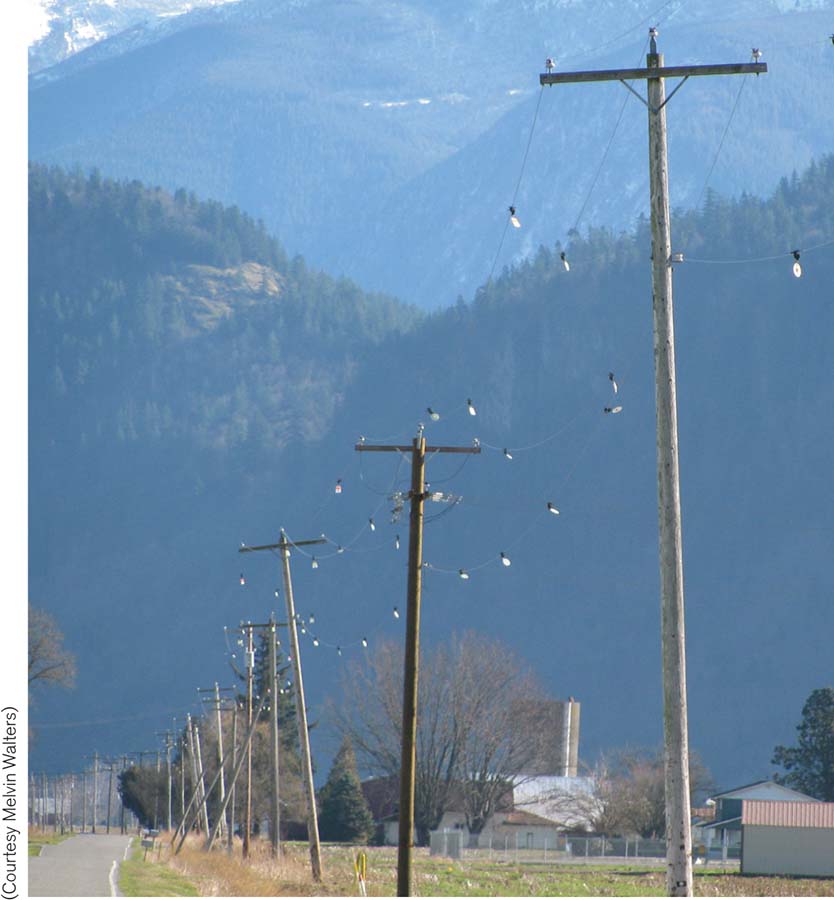10.9 Less damaging wind-

Should we wait for costs to decrease before setting aggressive RPS requirements?
Wind energy development impacts more land per unit of energy produced than do many other forms of energy production. The U.S. Department of Energy estimates that 50,000 km2 (19,300 mi2), an area roughly half the size of Ohio, will have to be developed for wind energy to reach its goal of generating 20% of the nation’s electricity by 2030. To avoid damaging wildlife habitats, one proposed strategy would site wind farms on disturbed landscapes, including agricultural lands and areas of oil and gas development. In addition to reducing habitat loss, developments on agricultural land can provide supplemental income to farmers or other landowners (Figure 10.41).


What incentives might federal, state, and local governments create to encourage wind energy development on lands with lower conservation value?
320
A recent analysis shows that there are sufficient areas of disturbed land across the United States to meet the Department of Energy goal of 20% wind-
Reducing Bird Mortality
Changing the way that wind generators are operated and using newer types of wind generators appear to reduce wildlife mortality. For instance, ongoing studies at the Altamont Pass Wind Resource Area (APWRA) have documented that newer wind turbine designs cause significantly lower mortality than older wind turbines operating at the same time (Figure 10.42). Researchers have suggested that the older wind turbines attracted birds because the towers supporting them were constructed of a lattice-

On those wind farms, where wind turbines are mostly of newer designs, researchers have observed rates of mortality among raptors that are approximately 60% lower than on wind farms across California and more than 70% lower than bird mortality rates at the APWRA. In response, utilities are actively replacing older wind turbines with newer ones that are safer for birds and that will generate more electrical power in the same area. For instance, 50 newer turbines replaced 235 older turbines installed at Solano Pass, California, which increased the generating capacity of the wind farm more than four-
Decreasing Hazards to Bats
While the redesign of wind turbines has benefited birds, bat mortality has increased to the point that in some regions, it exceeds bird mortality by a factor of 10 to 1. The number of bats killed by wind turbines is highest during migration in late summer and fall, and they tend to die from wind turbines spinning at lower speeds. Using this information, researchers performed an experiment at a site in southwestern Alberta, Canada, where high bat mortalities had been documented during migration. In the experiment, wind turbines were reprogrammed so that they only began spinning and generating electricity at higher wind speeds. As a result, bat mortality during migration was reduced by approximately 60%, with little loss in power generation (Figure 10.43). Similar changes in wind turbine operations at a wind project in Pennsylvania reduced bat mortalities at the site by 44% to 93%, with losses in annual power generation of less than 1%. However, better solutions are on the horizon. Bladeless wind turbines, now in development, may eventually eliminate the threat of wind turbines to both birds and bats.

Reducing Transmission Line Impacts

Should siting of transmission lines also take into consideration the potential impacts on human, as well as natural, communities?
One of the simplest ways to reduce bird mortality due to transmission line collisions is to locate new wind-
321
If new transmission lines must be built, marking them with colorful spirals, plates, or spheres has been shown by several independent studies to reduce bird collision mortality by an average of nearly 80% (Figure 10.44). However, because the transmission line network is so extensive, it is not economically feasible to mark all lines. Current research is focused on identifying bird collision “hot spots” so that mitigation efforts will have the greatest likelihood of success.

Think About It
How are concerns over bird and bat mortality leading to innovation in wind-
generator designs and operation? How can land classification by conservation value and careful planning help us avoid many impacts of renewable energy development?